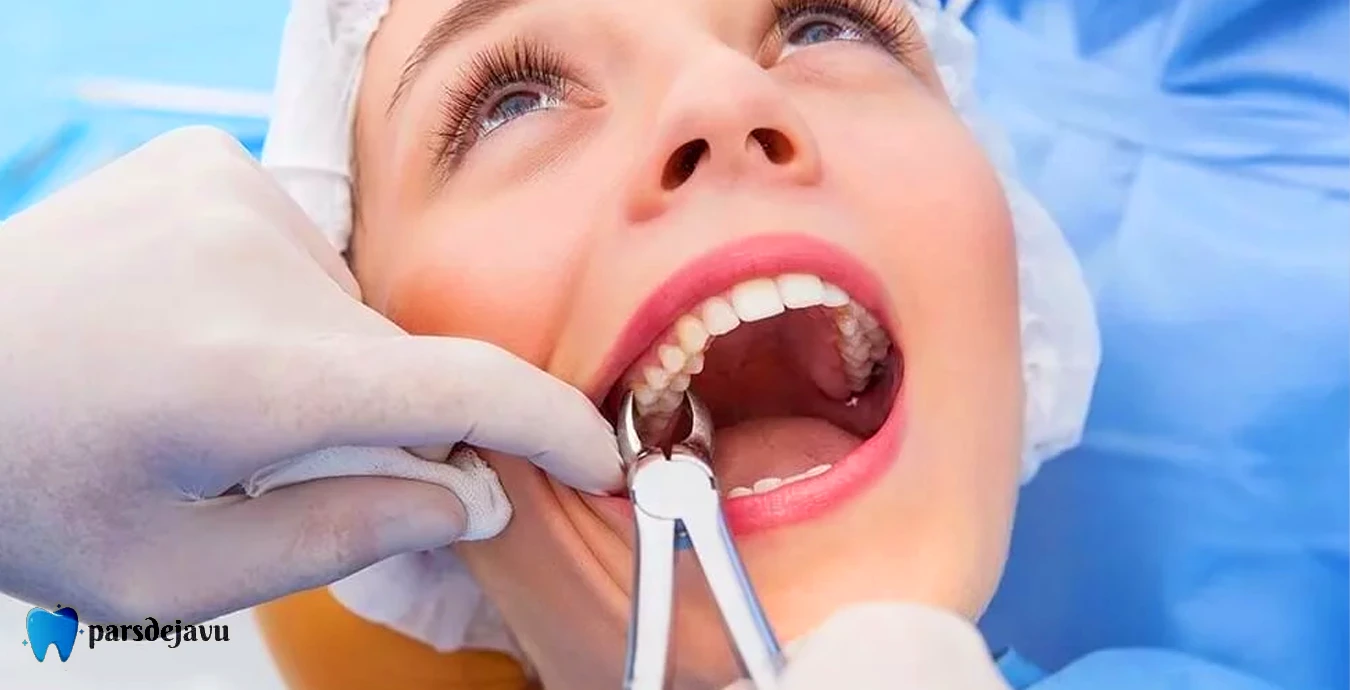In modern dentistry, preserving a patient’s natural teeth is always the goal. However, in certain situations, damage or infection can reach a point where extracting the tooth is the only logical solution to maintain oral health and prevent further complications.
In this article, you will learn everything about tooth extraction: the reasons for it, its types, the procedure, post-extraction care, and what to do afterward.
Book Appointment
"*" indicates required fields
When Is Tooth Extraction Necessary?
- Severe tooth decay: where the tooth root is completely compromised
- Extensive infection that cannot be treated with a root canal
- Impacted or partially erupted wisdom teeth causing pain, inflammation, or damage to adjacent teeth
- Severe root or crown fractures
- Dental crowding in preparation for orthodontic treatment
- Severe mobility due to advanced periodontal disease

Types of Tooth Extraction
1. Simple Extraction
Used when the tooth is fully erupted and visible; removed with forceps under local anesthesia.
Surgical Extraction
Required in more complicated cases like impacted, broken, or submerged teeth. May involve incisions in the gum or removal of bone. Typically performed by an oral and maxillofacial surgeon.
Aftercare Following Extraction
- Bite on a sterile gauze pad for 30 minutes, then dispose
- Bite on a sterile gauze pad for 30 minutes, then dispose
- Do not smoke for two days
- Avoid hot foods and drinks
- Do not use a straw
- Take only prescribed pain medication
- Use cold compress during the first 24 hours to reduce swelling
- Contact your dentist immediately if pain or bleeding persists

Contact your dentist immediately if pain or bleeding persists
Although often necessary and generally safe, tooth extraction may cause side effects, most of which are temporary:
1. Pain and swelling
normal and managed with medication; severity depends on extraction type
2. Bleeding
mild bleeding for several hours is normal; consult your dentist if it continues over 24 hours
3. Swelling and bruising
more common with surgical extraction; usually fades after 2–3 days
4. Dry Socket
occurs when a blood clot is dislodged, exposing bone and causing intense pain; requires prompt treatment
5. Infection
due to poor hygiene or insufficient antibiotic use; symptoms include fever, bad odor, and excessive swelling
6. Damage to adjacent teeth or sinuses
rare but possible, especially with upper molar extractions near the sinus cavity
Tooth Replacement Options
After extraction, it’s important to replace the missing tooth to prevent adjacent tooth movement, bone loss, and difficulties in chewing or speaking. Options include:
- Dental Implant: the best and most permanent solution
- Dental Bridge: a fixed bridge
- Removable Denture: a partial or full denture
Why Choose Pars Dejavu Dental Clinic for Extraction?
- Completely painless procedures with precise anesthesia
- Use of sterilized tools and modern technology
- Surgical extractions performed by oral and maxillofacial specialists
- Comprehensive consultation on replacement options and post-care
- Post-treatment support and easy access in case of complications
